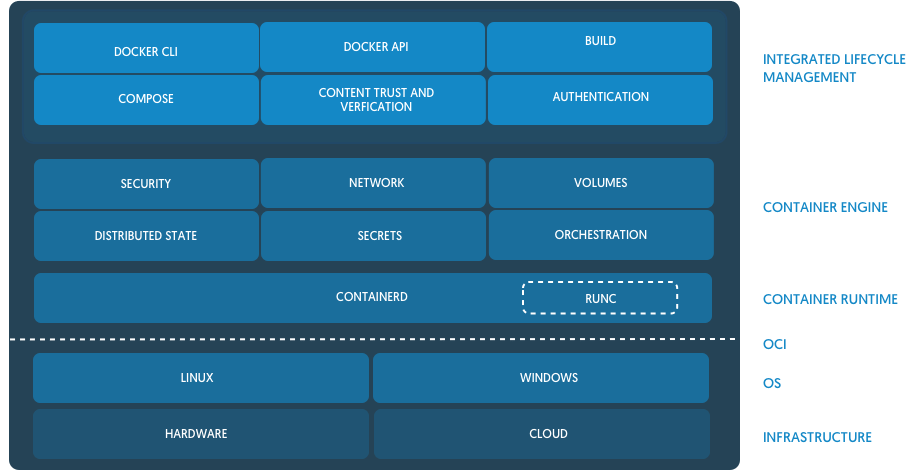Image Layers Example
- Pulling out the image from the registry
$ docker pull ubuntu
Using default tag: latest
latest: Pulling from library/ubuntu
5ba4f30e5bea: Pull complete
9d7d19c9dc56: Pull complete
ac6ad7efd0f9: Pull complete
e7491a747824: Pull complete
a3ed95caeb02: Pull complete
Digest: sha256:46fb5d001b88ad904c5c732b086b596b92cfb4a4840a3abd0e35dbb6870585e4
Status: Downloaded newer image for ubuntu:latest
- Each image layer has its own directory under
/var/lib/docker/overlay/.
- This is where the contents of each image layer are stored.
Directories on the file system
$ ls -l /var/lib/docker/overlay/
total 20
drwx------ 3 root root 4096 Jun 20 16:11 38f3ed2eac129654acef11c32670b534670c3a06e483fce313d72e3e0a15baa8
drwx------ 3 root root 4096 Jun 20 16:11 55f1e14c361b90570df46371b20ce6d480c434981cbda5fd68c6ff61aa0a5358
drwx------ 3 root root 4096 Jun 20 16:11 824c8a961a4f5e8fe4f4243dab57c5be798e7fd195f6d88ab06aea92ba931654
drwx------ 3 root root 4096 Jun 20 16:11 ad0fe55125ebf599da124da175174a4b8c1878afe6907bf7c78570341f308461
drwx------ 3 root root 4096 Jun 20 16:11 edab9b5e5bf73f2997524eebeac1de4cf9c8b904fa8ad3ec43b3504196aa3801
- The organization of files allows for efficient use of disk space.
- There are files unique to every layer and hard links to files shared with lower layers
Dockerfile
- Dockerfile is a script that creates a new image
# This is a comment
FROM oraclelinux:7
MAINTAINER Tomas Vitvar <tomas@vitvar.com>
RUN yum install -q -y httpd
EXPOSE 80
CMD httpd -X
A line in the Dockerfile will create an intermediary layer
$ docker build -t tomvit/httpd:v1 .
Sending build context to Docker daemon 2.048 kB
Step 1 : FROM oraclelinux:7
---> 4c357c6e421e
Step 2 : MAINTAINER Tomas Vitvar <tomas@vitvar.com>
---> Running in 35feebb2ffab
---> 95b35d5d793e
Removing intermediate container 35feebb2ffab
Step 3 : RUN yum install -q -y httpd
---> Running in 3b9aee3c3ef1
---> 888c49141af9
Removing intermediate container 3b9aee3c3ef1
Step 4 : EXPOSE 80
---> Running in 03e1ef9bf875
---> c28545e3580c
Removing intermediate container 03e1ef9bf875
Step 5 : CMD httpd -X
---> Running in 3c1c0273a1ef
- If processing fails at some step, all preceeding steps will be loaded from the cache on the next run.



